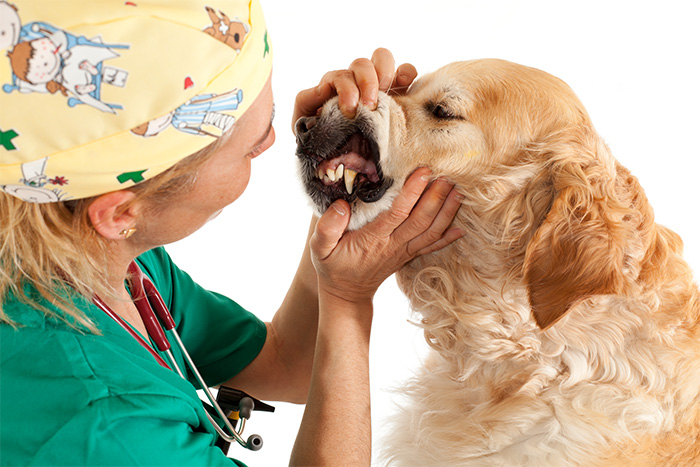Did you brush your dog’s teeth today? While the idea may sound crazy especially for novice pet owners, your veterinarian will asset that regular brushing of your dog’s teeth makes sense just as it does with your own teeth.
Why Brush Your Dog’s Teeth
Dogs may not be eating and drinking a wide range of food and beverages that cause cavities – canine experts recommend that main meals should be composed of high-quality commercial dog food purchased from reliable shops like PetSmart and PetCo – regular brushing for dogs is still a must. The benefits are aplenty, too, including:
- Prevent the accumulation of tartar, plaque, and calculus
- Look for injuries including trauma, such as fractured teeth
- Check for signs of diseases, such as gingivitis
- Inspect for possible teeth issues
Brushing your dog’s teeth is not just about good grooming habits but, more importantly, about maintaining good oral health. Besides, most dogs will not exhibit any outward symptoms of gum disease so much so that they will continue to eat well. But gum disease is a serious oral health issue because it increases the risk for heart, kidney and liver problems.
What to Do
Start paying more attention to your dog’s oral health care by keeping the following tips in mind.
Start your dog on good dental hygiene habits at an early age. Puppies will likely become accustomed to brushing faster than older dogs but don’t despair as even older dogs can be taught new habits. Just take it slow for older dogs.
Schedule regular dental examinations and cleanings for your dog with a qualified veterinarian. Keep in mind that good dental care for dogs do not start and stop with regular brushing of the teeth. Your dog will be healthier with regular dental exams and professional cleaning, which will maintain good oral health including normal function of the teeth.
Brush your dog’s teeth in a gentle and gradual manner. It may take a few weeks before your dog can become accustomed to the brushing routine so be patient and gentle.
Use a dog-specific toothbrush, which can be purchased from pet supply stores like PetSmart and PetCo, instead of the regular toothbrush designed for humans. Pet-specific toothbrushes are designed to reach the back recesses of a dog’s mouth as well as ensure that the sensitive gums are not easily injured. Finger brushes are also available but these are unsuitable for smaller dogs.
Use toothpaste formulated specially for dogs. This is because toothpaste for humans contains ingredients (e.g., fluoride, detergent) that should be spit out after brushing. Since your dog will likely swallow the toothpaste, it is best to avoid toothpastes for humans, not to mention that toothpaste for dogs come in a wide range of canine-friendly flavors like poultry, beef and seafood.
Give your dog a chew toy. Dogs gain important benefits from daily chewing including cleaner and stronger teeth.
Be sure to keep brushing your dog’s teeth fun and rewarding, which will make your pet more receptive to the activity. Before, during and after brushing its teeth, you should praise your pet as well as pet and play, when applicable, your dog.
Be sure to ask your veterinarian for referrals to a veterinary dentist, if possible. While veterinarians can do the job, a veterinary dentist has the specialized knowledge, skills and tools for the job.
How to Do It
While you can expect challenges during the first few tries at brushing your pet’s teeth, you have to persevere because it is not only your pet’s health at stake but yours, too. After all, when your pet is healthy, you are happy – and your pockets are happy, too.
Brushing your pet’s teeth for the first time can be easier with the following steps.
- Ensure that your dog is calm and relaxed with your goal being to set a routine of brushing at least 3 times a week. Daily brushing is an excellent goal but 3 times a week will suffice against the build-up of plaque, tartar and calculus.
- Get your tools including the specially-made toothbrush and toothpaste for pets.
- Assume the right position. Kneeling or sitting in front of your pet is the best; avoid standing above or holding your pet down since these are threatening positions. When your pet seems upset, stop and try again tomorrow.
- Test your pet’s willingness for touching its mouth. Run your finger along its upper gums and teeth, which will get your pet accustomed to the feel of an object other than food against its teeth. Apply light pressure only and be patient, too, as it will take several sessions of this step before your dog feels comfortable to proceed to the next step.
- Let your pet taste the toothpaste. Choose one that it will see as a favorite treat. Place a small amount of toothpaste on the toothbrush and let the process begin.
When brushing your dog’s teeth, be sure to brush in small circles, focus on plaque, and apply gentle pressure. You and your dog should soon get the hang of it. You can buy a suitable pet toothbrush in dog supplies stores like Petsmart.



Loved! Just wanted to point out you should be using non-toxic paste or a Food Grade Hydrogen Peroxide to brush! Also, if you don’t have time to brush, you can always do a weekly spritz of Food Grade Hydrogen Peroxide to clean fido’s smile without the hands-in-dogs-mouth experience! We just did a post with more tips on dog oral health care here: https://essentialoxygen.com/dog-oral-hygiene-fresh-furry-friend-breath/